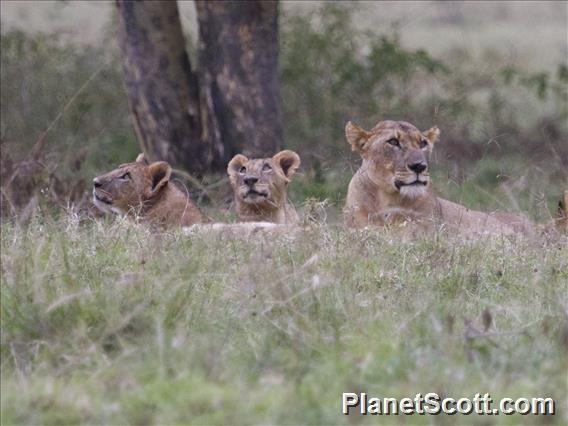Lion (Panthera leo)

Lion (Panthera leo)
×


Lion (Panthera leo)
About Lion (Panthera leo)
- Kingdom: Animals
- Phylum: Chordates
- Class: Mammals
- Order: Carnivorans
- Family: Felidae
The lion is a large cat of the genus Panthera, currently found only in Sub-Saharan Africa and India. It has a muscular, broad-chested body; a short, rounded head; round ears; and a dark, hairy tuft at the tip of its tail. It is sexually dimorphic; adult male lions are larger than females and have a prominent mane. It is a social species, forming groups called prides. A lion's pride consists of a few adult males, related females, and cubs. Groups of female lions usually hunt together, preying mostly on medium-sized and large ungulates. The lion is an apex and keystone predator.
Source: Wikipedia
Visits
-
2002-11-16
Mikumi National Park, Tanzania -
2002-12-02
Chobe National Park - Kasane, Botswana -
2002-12-06
Chobe National Park - Suvuti, Botswana -
2002-12-08
Moremi Game Reserve, Botswana -
2002-12-10
Moremi Game Reserve - Chief's Island, BotswanaThere was a pair about 200 meters from our camp, and we were keeping our eyes on each other. The female tried to take down a blue wildebeast, but she failed. -
2003-01-15
Etosha National Park, Namibia -
2003-03-06
Ngorongoro Conservation Area, Tanzania -
2003-03-07
Serengeti, Tanzania -
2003-03-09
Lake Manyara National Park, Tanzania -
2013-10-25
Lake Nakuru National Park, Kenya










